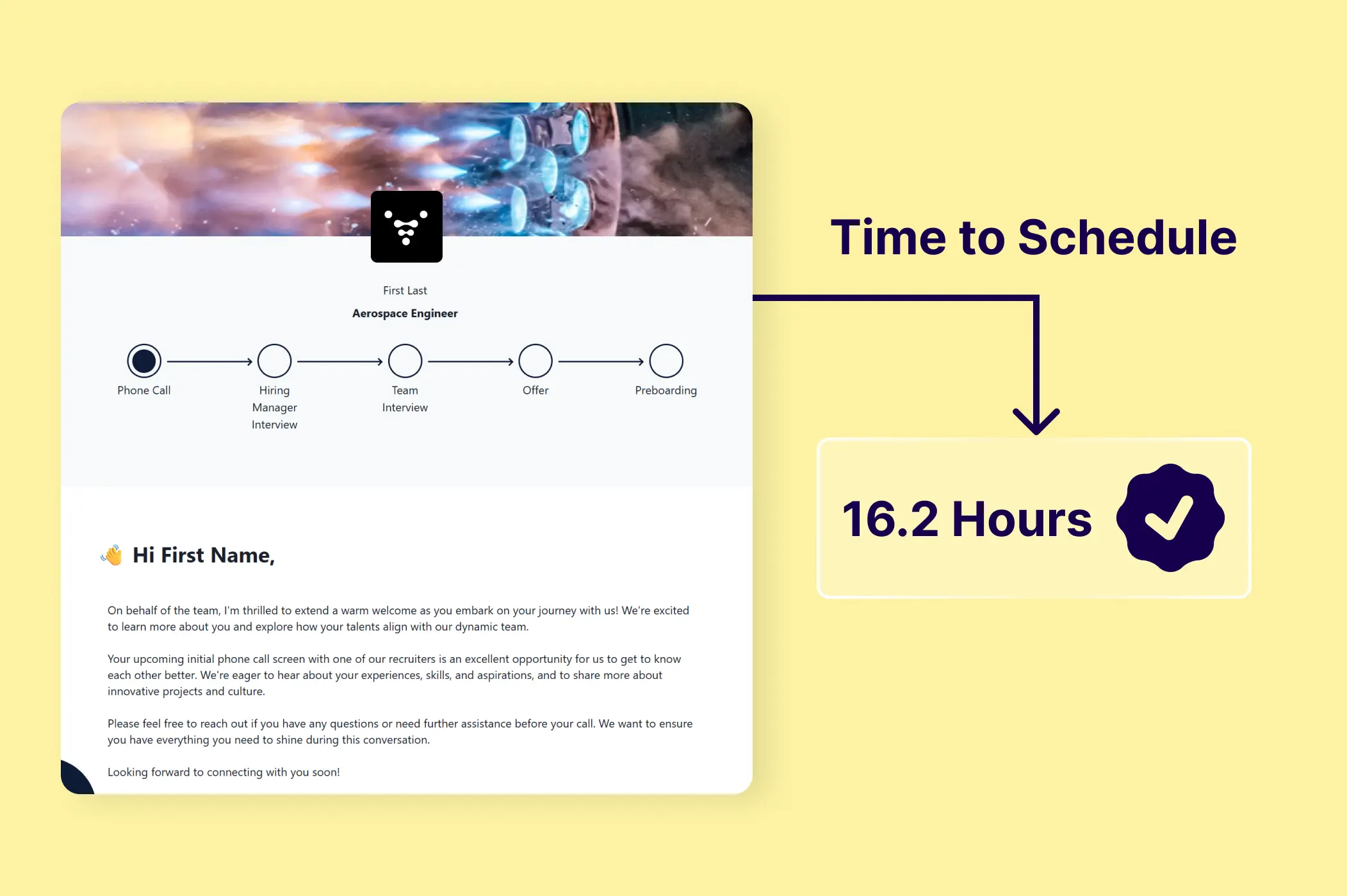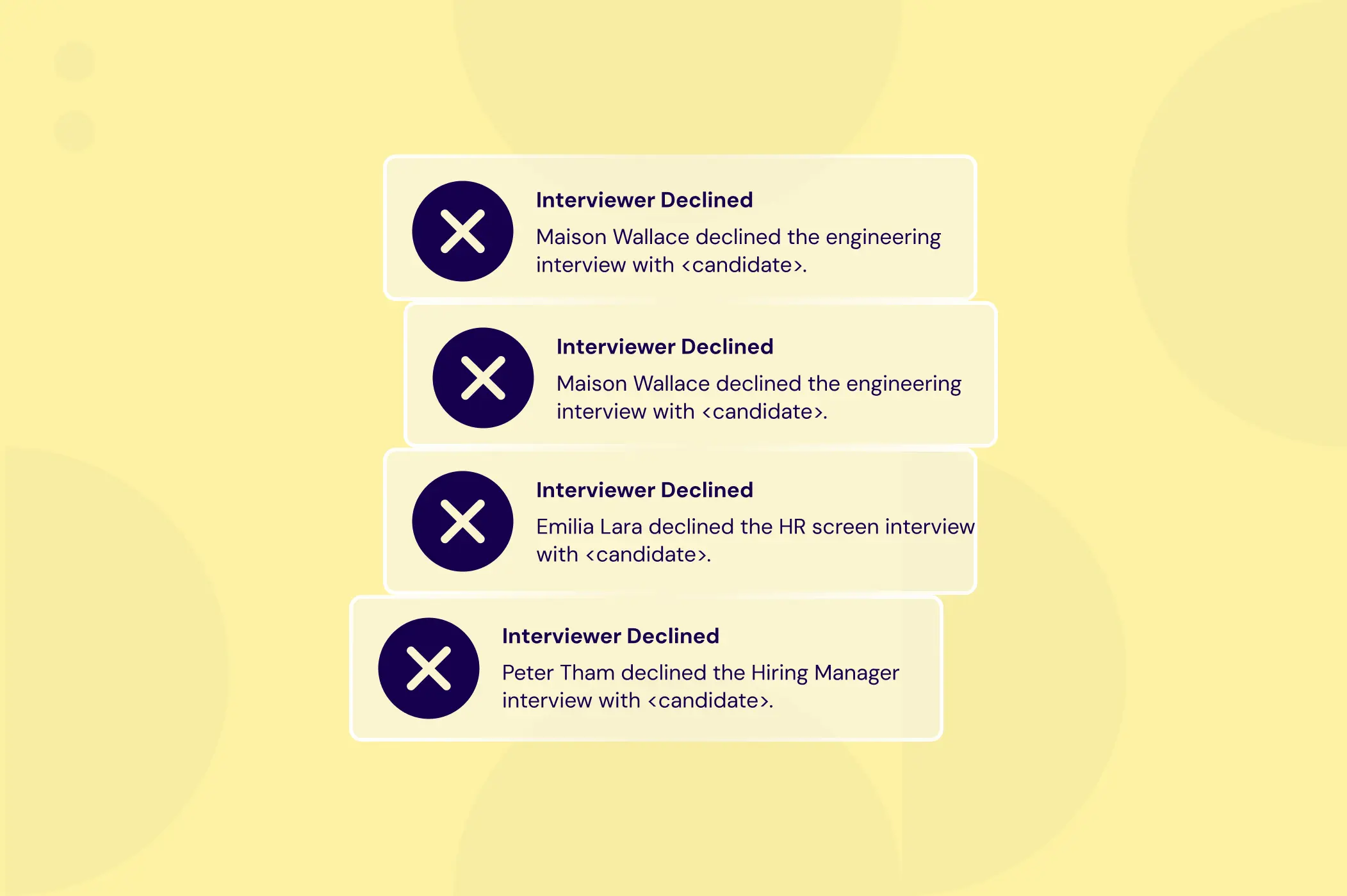Welcome to the captivating realm of Talent Acquisition Metrics – those potent markers that hold the key to elevating your business triumphs. At a glance, Talent Acquisition may appear as assembling an A-team to drive your company forward, with talent metrics as the guiding light. But it's more than mere numbers; it's deciphering these figures into meaningful insights that resonate with your leadership, including the esteemed C-suite.
Got a metric maze? We're here to guide you. Whether you're swimming in data or in dire need of metrics, worry not. We're here to help you identify vital metrics for leadership and decision-making, converting them into plain language everyone can understand. So, grab a cozy spot and let's dive in.
Essential Talent Metrics: Making the Complex Clear
Time-To-Fill (TTF)
Time-to-Fill measures the average duration it takes to fill a job vacancy from the moment it is open until a suitable candidate accepts the offer. This metric is crucial for leadership as it directly impacts the organization's productivity and performance. A long TTF can lead to increased costs, decreased efficiency, and missed business opportunities.
Formula: Time to Fill = Total Days Job Vacant
Challenges:
- Inconsistent Data Recording: Different teams or departments may record the start and end dates of the hiring process differently, leading to discrepancies in TTF calculations.
- Multiple Approval Stages: Several approval stages can make it challenging to pinpoint the precise start date, especially with delays between approvals.
Considerations:
- Standardize Data Collection: Set clear guidelines for recording TTF data across all departments to ensure consistent and accurate measurements.
- Set Realistic Timeframes: Account for position complexity and market conditions to establish feasible TTF expectations.
Cost per Hire (CPH)
Cost per Hire calculates the total expenses incurred during the hiring process, including recruitment advertising, agency fees, and internal HR costs, divided by the number of hires made in a specific period. Leadership is concerned with the financial implications of talent acquisition, and CPH helps in assessing the efficiency of the recruitment process.
Formula: $ Cost Per Hire = [ Total External Costs + Total Internal Costs ] / Total Hires
Challenges:
- Overlooked Hidden Costs: Expenses like internal staff time spent on recruitment activities or advertising might be underestimated or missed in CPH calculations.
- Variable Costs: Differing costs for methods like employee referrals can complicate attributing expenses to individual hires.
Considerations:
- Comprehensive Cost Analysis: Review all direct and indirect recruitment costs thoroughly for a comprehensive CPH calculation.
- Categorize Costs: Classify recruitment costs into fixed and variable components to understand the impact of various hiring methods.
Quality of Hire (QoH)
The ever-elusive Quality of Hire (QoH) metric evaluates the performance and impact of new hires on the organization. Leadership values QoH for its influence on business outcomes and the company's ability to achieve its goals.
QoH Formulas
QoH (%) = (Performance Metrics + Onboarding & Ramp Up Time + Engagement + Culture Addition) / N
N = the total # of factors or indicators you’re using to evaluate the hire
Overall QoH (%) = [ Average QoH scores + ( 100 - Turnover Rate ) ] / 2
OR
Overall QoH (%) = (PR + HP + HR) / N
PR = Average performance rating of all new hires
HP = % of new hires with established onboarding & established ramp up time
HR = % of new hires retained after 1 year
Challenges:
- Subjectivity and Multifaceted Nature: QoH involves multiple subjective factors like job performance and cultural fit, making it complex to measure uniformly.
- Time Sensitivity: QoH often requires long-term data to evaluate new hire impact accurately, which can be challenging to collect immediately.
- Data Availability: Access to performance metrics or data sources across teams can hinder comprehensive QoH data collection.
- Attribution Challenges: Separating a new hire's success from factors like training can complicate performance evaluation.
Considerations:
- Performance Metrics: Rely on quantitative performance metrics such as sales revenue or customer satisfaction to measure QoH.
- 360-Degree Feedback: Gather input from managers, peers, and subordinates for a holistic QoH assessment.
- Onboarding and Training Evaluations: Assess QoH based on the effectiveness of onboarding and training programs.
- Longitudinal Studies: Conduct long-term studies for sustained QoH evaluation.
Unlock the Future of Recruiting— Book a Demo Today!

Employee Retention Rate (RR)
Employee Retention Rate measures the percentage of employees who remain with the organization over a specific period. Leadership values this metric as it reflects the organization's ability to retain top talent and build a stable workforce.
Formula: Retention Rate (%) = ( Employees Still Employed / Employees at Start ) x 100
Challenges:
- Incomplete Data: Gaps in data or employees leaving without notice can hinder tracking.
- Short-Term Retention: High retention rates may hide short-term retention issues.
Considerations:
- Regular Exit Interviews: Conduct exit interviews to understand reasons for leaving and identify areas for improvement.
- Analyze Retention by Demographics: Assess retention rates across demographics to uncover diversity and inclusion challenges.
Offer Acceptance Rate (OAR)
Offer Acceptance Rate shows the percentage of candidates who accept job offers after receiving them. This metric is valuable for leadership as it provides insights into the effectiveness of the hiring process and the attractiveness of the company as an employer.
Formula: Offer Acceptance Rate (%) = ( Accepted Offers / Total Offers ) x 100
Challenges:
- Conditional Offers: Offers with conditions can affect acceptance rates if candidates don't meet requirements.
- Multiple Offers: Simultaneous multiple offers can lead to competition and declines.
Considerations:
- Reevaluate Conditional Offers: Review conditional offers' impact and adjust them for better candidate experience.
- Candidate Engagement: Maintain consistent communication with candidates to increase acceptance rates.
Turnover Costs
Turnover Costs tally financial impact of employee turnover, including recruitment costs, training expenses, and lost productivity. Leadership understands that high turnover can be a significant drain on resources, and this metric helps them assess the financial implications of turnover.
Formula: Turnover Cost = ( Total Employees x Turnover Rate x Avg. Dept Cost )
Challenges:
- Identifying Direct Costs: Includes recruitment, onboarding, and separation costs.
- Identifying Hidden Costs: Intangible losses like knowledge transfer and decreased morale contribute.
Considerations:
- Analyze Turnover by Department: Break down costs by department for targeted retention efforts.
- Invest in Employee Engagement: Improve engagement to reduce turnover and associated costs.
Candidate Experience Feedback
We don’t have a fancy one-fits-all-formula for you, so instead let's break down how you can measure candidate experience in both qualitative and quantitative ways. Remember, combining both quantitative and qualitative methods gives you a more comprehensive view of candidate experience, helping you identify areas for improvement and celebrate successes.
Quantitative Measurement:
- Net Promoter Score (NPS): After the hiring process, ask candidates how likely they are to recommend your company to others on a scale of 0-10. Calculate the NPS by subtracting the percentage of detractors (0-6) from the percentage of promoters (9-10). Aim for a positive score, as it indicates a good candidate experience.
- Application Completion Rate: Track the percentage of candidates who complete your application process. If the rate is low, it might signal a need to simplify or streamline your application process.
- Time-to-Apply: Measure how long it takes for candidates to complete the application process. A shorter time might indicate a user-friendly process, while a longer time might suggest complications.
Qualitative Measurement:
- Real time sentiments: connect with candidates directly throughout their interview journey for their real-time feelings on how they are experiencing the process. candidate.fyi offers automated pulse checks from candidates, including emojis, to gauge how candidates are feeling.
- Post-Interview Surveys: Send candidates a brief survey after their interviews to gather their thoughts on the experience. Ask about communication, interview format, and overall impressions. Open-ended questions can provide valuable insights.
- Candidate Feedback Sessions: Offer candidates a chance to provide feedback in one-on-one sessions or focus groups. This allows for in-depth discussions about their experience and suggestions for improvement.
- Social Media Listening: Monitor social media platforms for mentions of your company by candidates. Their posts and comments can give you a sense of their experience, whether positive or negative.
Challenges:
- Survey Fatigue: Multiple surveys can lead to reduced response rates.
- Biased Feedback: Hired vs. not hired candidates may provide skewed feedback.
- Limited Participation: Some candidates may not provide feedback.
Considerations:
- Short and Targeted Surveys: Design concise and targeted surveys for relevant feedback.
- Anonymous Feedback: Offer anonymity for honest responses.
- Post-Rejection Surveys: Gather insights from non-hired candidates.
- Real-Time Surveys: Capture experiences at key touchpoints.
Data Collection Tools and Tactics to Implement
To effectively measure these key metrics in addition to streamlining their in talent acquisition efforts, talent teams can implement the following tactics and leverage industry tools:
- Applicant Tracking Systems (ATS): Streamline recruitment, track interactions, and centralize data.
- Candidate Surveys: Gather feedback to enhance experience and guide improvements.
- Talent Analytics: Track and analyze recruitment metrics for insights.
- Employer Branding: Attract talent and positively influence perceptions.
- Interview Training: Equip managers, enhance experience, and reduce risks.
In today’s competitive market, talent acquisition must speak the language of business leadership. Metrics related to cost, retention, diversity, and candidate experience bridge the HR-C-suite gap. Utilize tools and tactics to measure and succeed, propelling your organization toward prosperity.
TL;DR: Empowering Your Leadership with Key Talent Insights vs All The Metrics
Strategic success lies in the art of selectivity. Amidst a sea of data, it's the discerning focus on key metrics that amplifies your influence within the C Suite.
Your journey isn't about drowning in numbers; it's about focusing the narrative that captivates executives. Metrics like Time-to-Fill, Cost per Hire, Quality of Hire, Employee Retention Rate, Offer Acceptance Rate, Turnover Costs, and Candidate Experience Feedback serve as your guiding stars, steering your strategies with precision.
Remember: it's not about all metrics; it's about the right metrics. By mastering the art of selection, measurement, and strategic deployment, you're shaping the destiny of your organization. Your impact isn't bound by numbers; it's fueled by the insights they yield. Empower leadership with a strategic vision crafted from essential metrics, and watch as your influence reaches new heights.
Harness the power of these key talent acquisition metrics and elevate your business to new heights. Your journey towards data-driven decision-making starts now and we’re excited for you!











